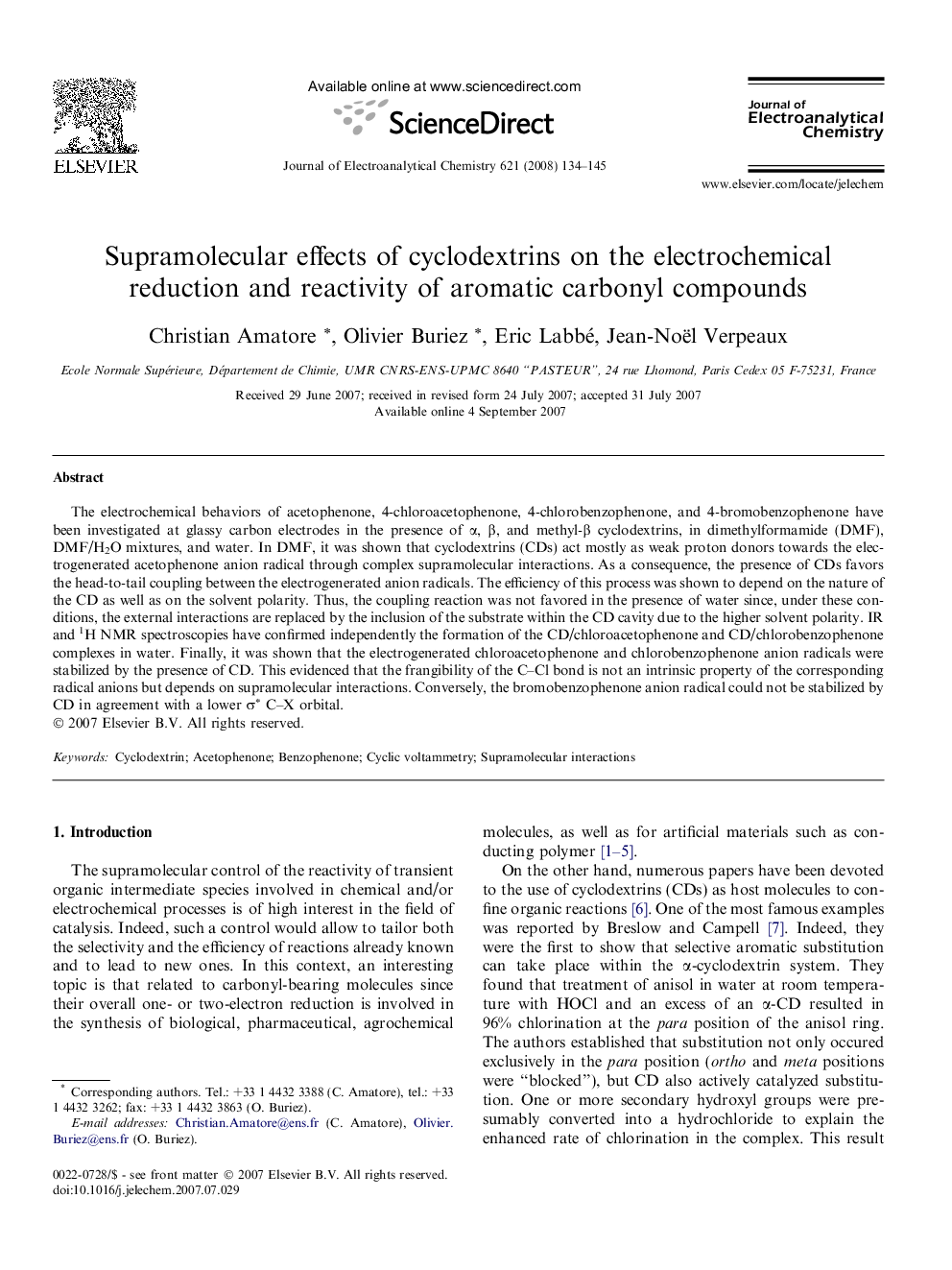| Article ID | Journal | Published Year | Pages | File Type |
|---|---|---|---|---|
| 220439 | Journal of Electroanalytical Chemistry | 2008 | 12 Pages |
The electrochemical behaviors of acetophenone, 4-chloroacetophenone, 4-chlorobenzophenone, and 4-bromobenzophenone have been investigated at glassy carbon electrodes in the presence of α, β, and methyl-β cyclodextrins, in dimethylformamide (DMF), DMF/H2O mixtures, and water. In DMF, it was shown that cyclodextrins (CDs) act mostly as weak proton donors towards the electrogenerated acetophenone anion radical through complex supramolecular interactions. As a consequence, the presence of CDs favors the head-to-tail coupling between the electrogenerated anion radicals. The efficiency of this process was shown to depend on the nature of the CD as well as on the solvent polarity. Thus, the coupling reaction was not favored in the presence of water since, under these conditions, the external interactions are replaced by the inclusion of the substrate within the CD cavity due to the higher solvent polarity. IR and 1H NMR spectroscopies have confirmed independently the formation of the CD/chloroacetophenone and CD/chlorobenzophenone complexes in water. Finally, it was shown that the electrogenerated chloroacetophenone and chlorobenzophenone anion radicals were stabilized by the presence of CD. This evidenced that the frangibility of the C–Cl bond is not an intrinsic property of the corresponding radical anions but depends on supramolecular interactions. Conversely, the bromobenzophenone anion radical could not be stabilized by CD in agreement with a lower σ∗ C–X orbital.
